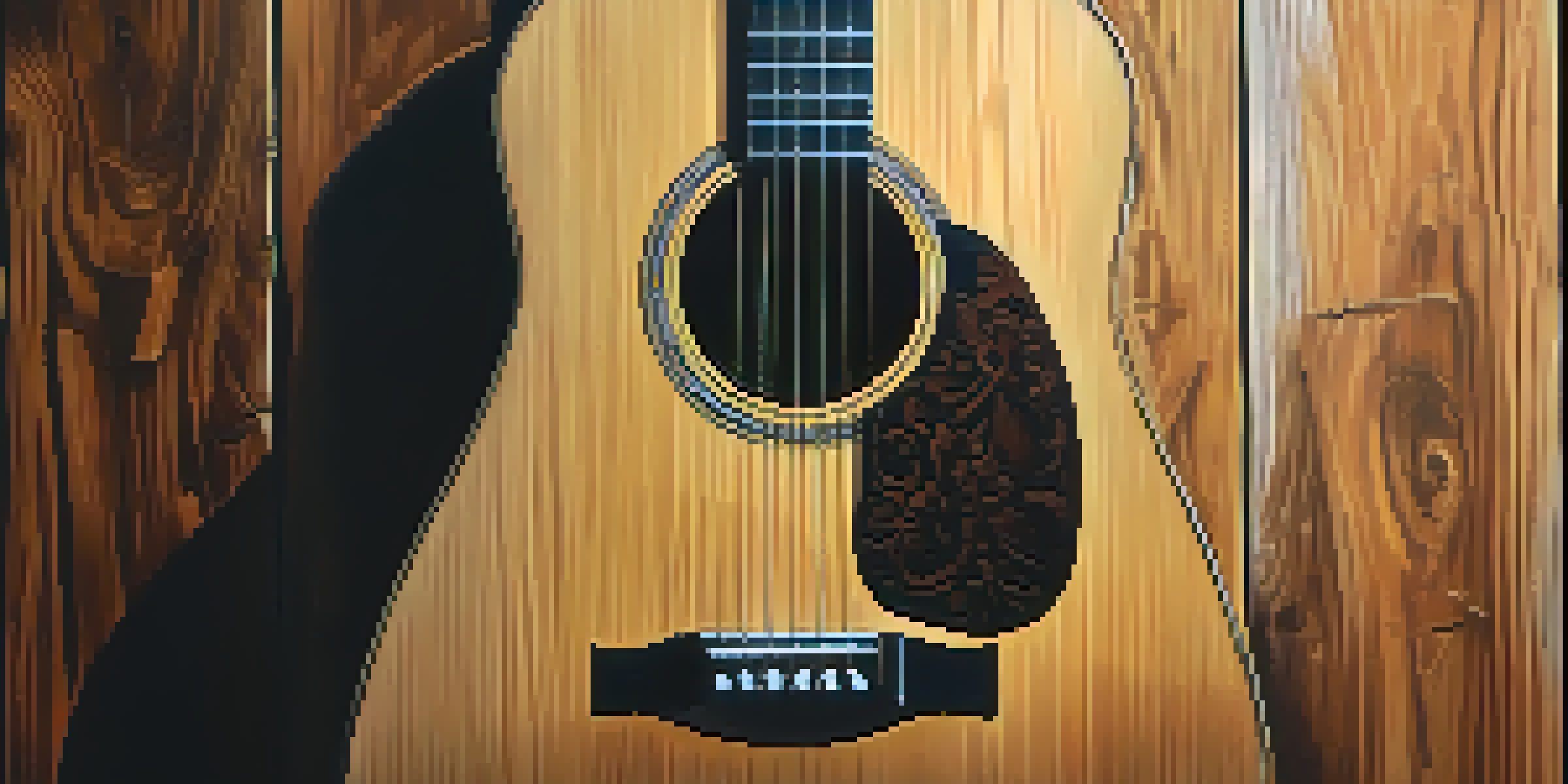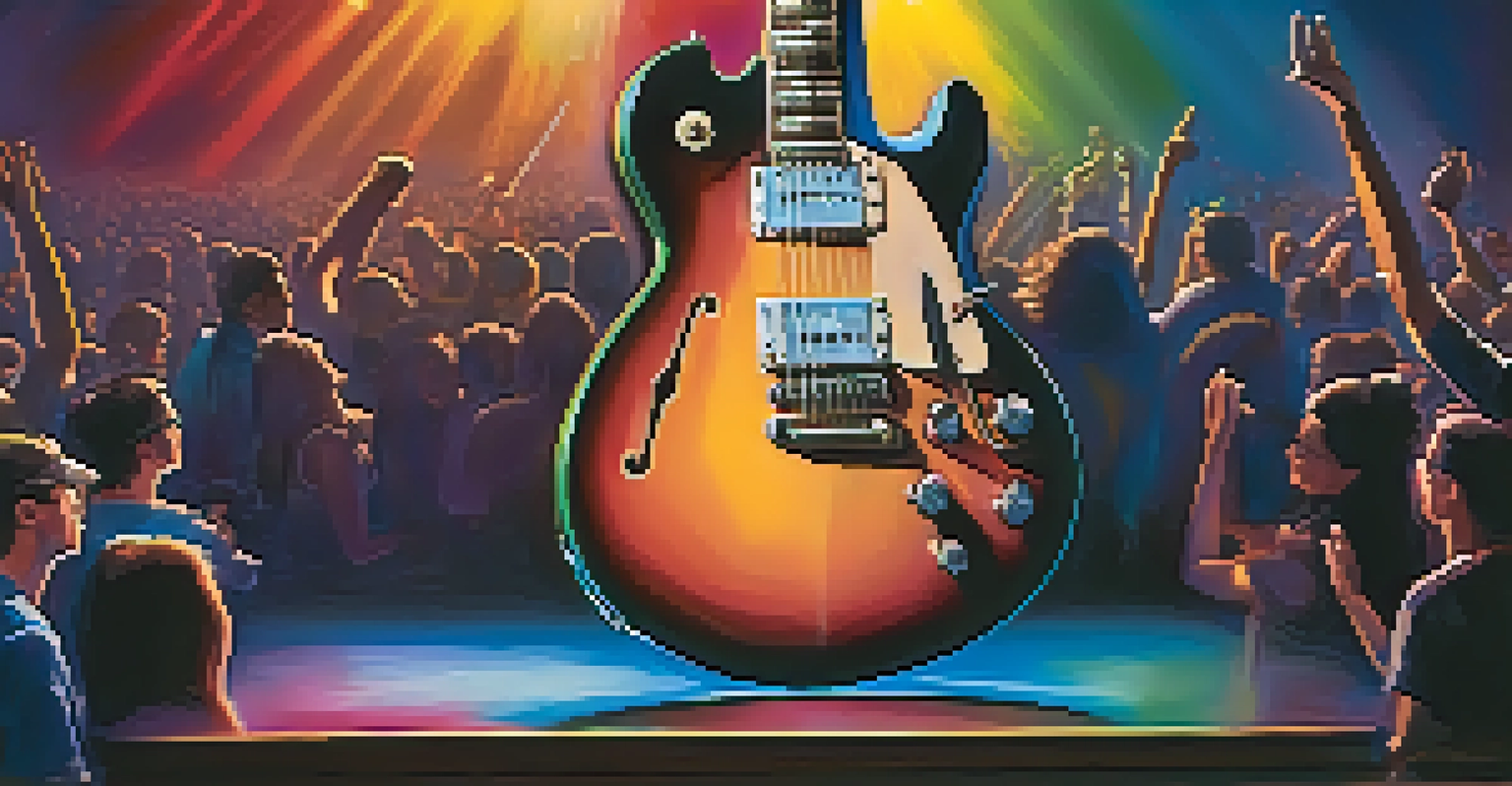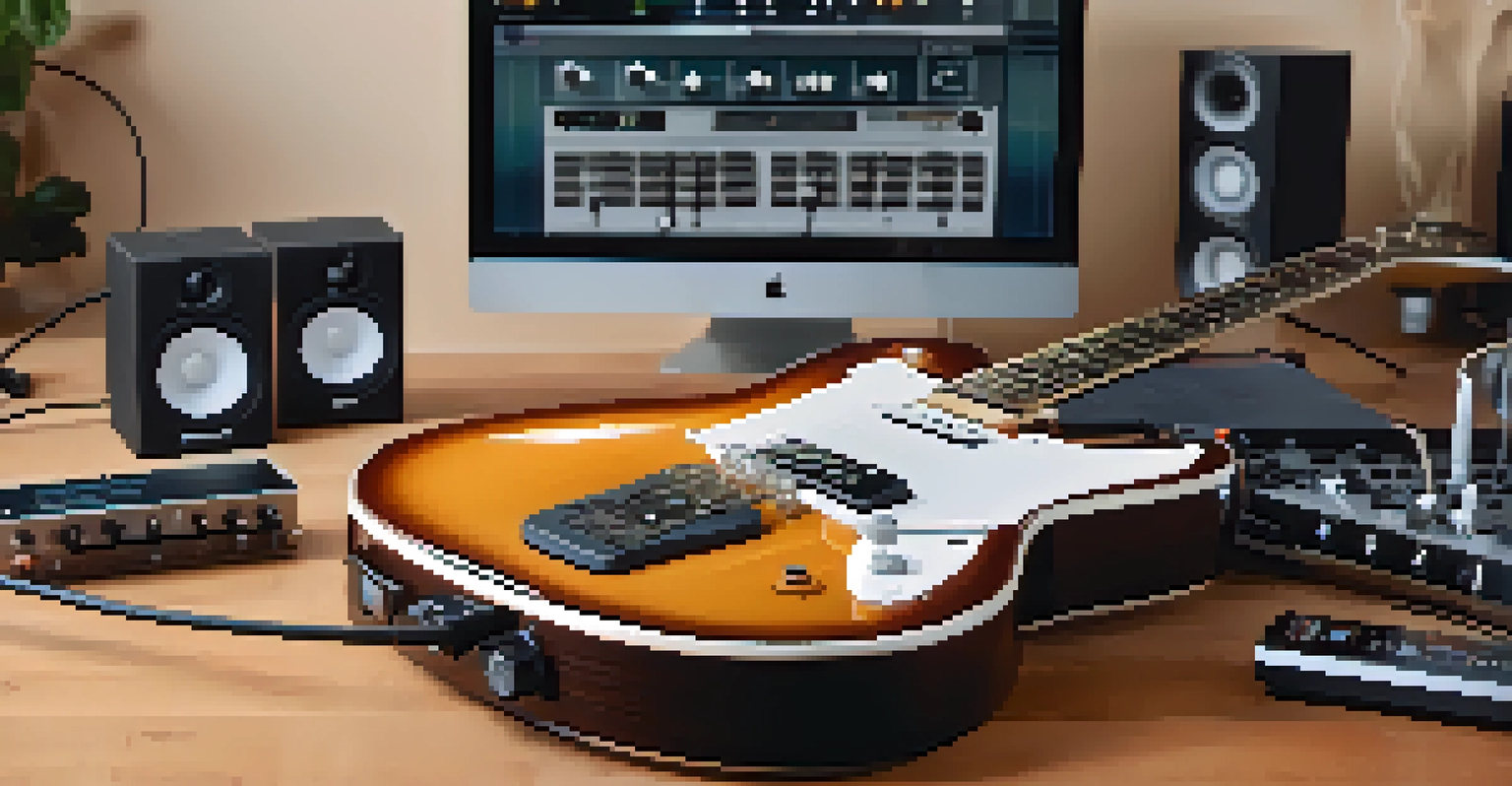Acoustic vs. Electric: Innovations Bridging the Gap

Understanding Acoustic and Electric Guitars
At first glance, acoustic and electric guitars seem worlds apart, but they share a rich history. Acoustic guitars produce sound through the vibration of strings, amplified by their hollow bodies, while electric guitars rely on pickups and amplifiers to create their sound. This fundamental difference shapes the playing experience and the genres each is best suited for. Both have their unique charm, making them popular among musicians of all levels.
The guitar is a miniature orchestra in itself.
Acoustic guitars are often associated with folk, country, and classical music, delivering warm, resonant tones. On the other hand, electric guitars dominate rock, blues, and jazz scenes with their versatility and ability to manipulate sound. Despite these differences, both types of guitars can coexist, enriching the music landscape and inspiring countless artists to experiment.
The innovation in guitar design has blurred the lines between acoustic and electric models. Many musicians now seek instruments that combine the best of both worlds, leading to a new wave of hybrid guitars. This fusion showcases how these two styles can inspire creativity and collaboration among musicians.
Recent Innovations in Guitar Design
In recent years, guitar manufacturers have introduced groundbreaking technologies aimed at enhancing playability and sound quality. For instance, the development of acoustic-electric guitars has allowed players to enjoy the rich tones of an acoustic while having the amplification options of an electric. This innovation has opened doors for live performances, making it easier for musicians to stand out on stage.

Another exciting advancement is the use of onboard effects and digital interfaces in electric guitars. These features allow players to modify their sound on the fly, experimenting with various tones without needing additional equipment. This convenience has made electric guitars even more appealing to modern musicians who value versatility and ease of use.
Acoustic vs. Electric Guitars
Acoustic guitars produce sound through their hollow bodies, while electric guitars rely on pickups and amplifiers, each catering to different musical genres.
Additionally, the rise of alternative materials in guitar construction has led to lighter, more durable instruments. These innovations not only enhance sound quality but also make guitars more accessible to players of all ages and skill levels. As technology continues to evolve, we can expect even more exciting developments in guitar design.
The Role of Technology in Guitar Playing
Technology has played a pivotal role in bridging the gap between acoustic and electric guitars. Digital audio workstations (DAWs) and software plugins enable musicians to record and edit their performances with ease, regardless of the guitar type. This accessibility has empowered guitarists to explore their creativity and produce high-quality music from their homes.
Music is the shorthand of emotion.
Moreover, advancements in learning tools, such as online tutorials and apps, have democratized guitar education. Players can now access a wealth of resources to improve their skills, no matter their instrument of choice. These tools encourage experimentation and help musicians discover their unique styles, whether they lean towards acoustic melodies or electric riffs.
As technology continues to develop, the barriers between acoustic and electric guitars will likely diminish even further. Musicians will have more opportunities to collaborate, blending genres and creating new sounds that challenge traditional definitions.
Exploring Hybrid Guitars and Their Popularity
Hybrid guitars have become increasingly popular as they combine features from both acoustic and electric models. These versatile instruments allow musicians to switch between styles seamlessly, making them an attractive option for those who enjoy playing various genres. The rise of hybrid guitars also reflects the evolving tastes of modern musicians, who often seek to push the boundaries of traditional music.
One notable example of a hybrid guitar is the acoustic-electric model, which features a built-in pickup system. This design allows players to amplify their acoustic sound while retaining the natural tone of the guitar. Such innovations have made it easier for musicians to adapt to different playing environments, whether in a studio or on stage.
Rise of Hybrid Guitars
Hybrid guitars, blending acoustic and electric features, offer musicians versatility and the ability to explore multiple genres seamlessly.
The popularity of hybrid guitars has inspired manufacturers to continue experimenting with design and technology. As more artists embrace these innovative instruments, we can expect to see even more exciting developments in the world of guitar music.
The Impact of Genres on Guitar Innovation
Different music genres have a significant impact on guitar innovation, as musicians continually seek new ways to express their creativity. For instance, the rise of rock and blues in the 20th century spurred advancements in electric guitar technology, leading to the development of iconic models that defined those genres. In turn, acoustic guitars have evolved to cater to folk and country music's unique sound requirements.
As genres continue to blend and evolve, so do the instruments that define them. Today's musicians often experiment with various styles, leading to the emergence of new guitar designs that cater to these hybrid genres. This cross-pollination of influences encourages manufacturers to innovate, resulting in guitars that can adapt to a wide range of musical expressions.
The influence of genres on guitar innovation highlights the importance of collaboration within the music community. As artists share ideas and techniques, they inspire one another to push the limits of their instruments, ultimately creating a richer, more diverse musical landscape.
Famous Artists Bridging the Acoustic-Electric Divide
Throughout music history, numerous artists have successfully bridged the gap between acoustic and electric guitars. Legends like Eric Clapton and Joan Baez have showcased their versatility by seamlessly transitioning between both styles, inspiring generations of musicians to do the same. Their ability to blend genres has not only enriched their music but also opened doors for new creative possibilities.
More recently, artists like Ed Sheeran and Taylor Swift have embraced both acoustic and electric guitars in their performances, highlighting the unique qualities of each. Their innovative use of technology, like loop pedals and effects, allows them to create captivating live shows that captivate audiences. This fusion of styles encourages fans to explore the depths of their musical preferences.
Technology Shapes Guitar Innovation
Advancements in technology have transformed guitar design, enhancing playability and accessibility while encouraging creative exploration among musicians.
The influence of these artists is a testament to the power of collaboration and experimentation in music. By embracing both acoustic and electric guitars, they inspire aspiring musicians to discover their own unique voices, regardless of the instrument they choose.
Looking Ahead: The Future of Guitars
As we look to the future, the evolution of guitars will undoubtedly continue to be shaped by technological advancements and musical trends. The increasing popularity of digital instruments and software suggests a shift in how we perceive traditional guitars, blending them with innovative tools to create entirely new sounds. This integration will likely lead to exciting developments, making the guitar experience even more dynamic.
Additionally, the growing interest in sustainability may influence guitar manufacturing processes. As musicians become more environmentally conscious, manufacturers may prioritize eco-friendly materials and practices, paving the way for a new era of guitar production. This shift could enhance the connection between artists and the environment, allowing them to create music that resonates with their values.

Ultimately, the future of guitars is bright, with endless possibilities for innovation and creativity. As musicians continue to explore the relationship between acoustic and electric styles, we can expect to witness a rich tapestry of sounds that reflect the diverse musical landscape.